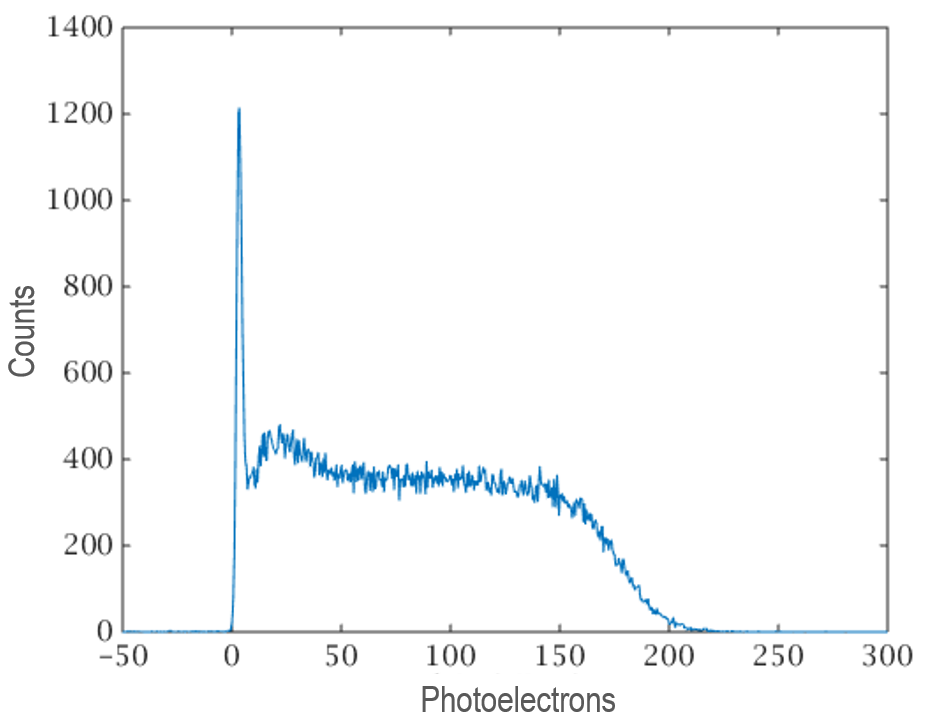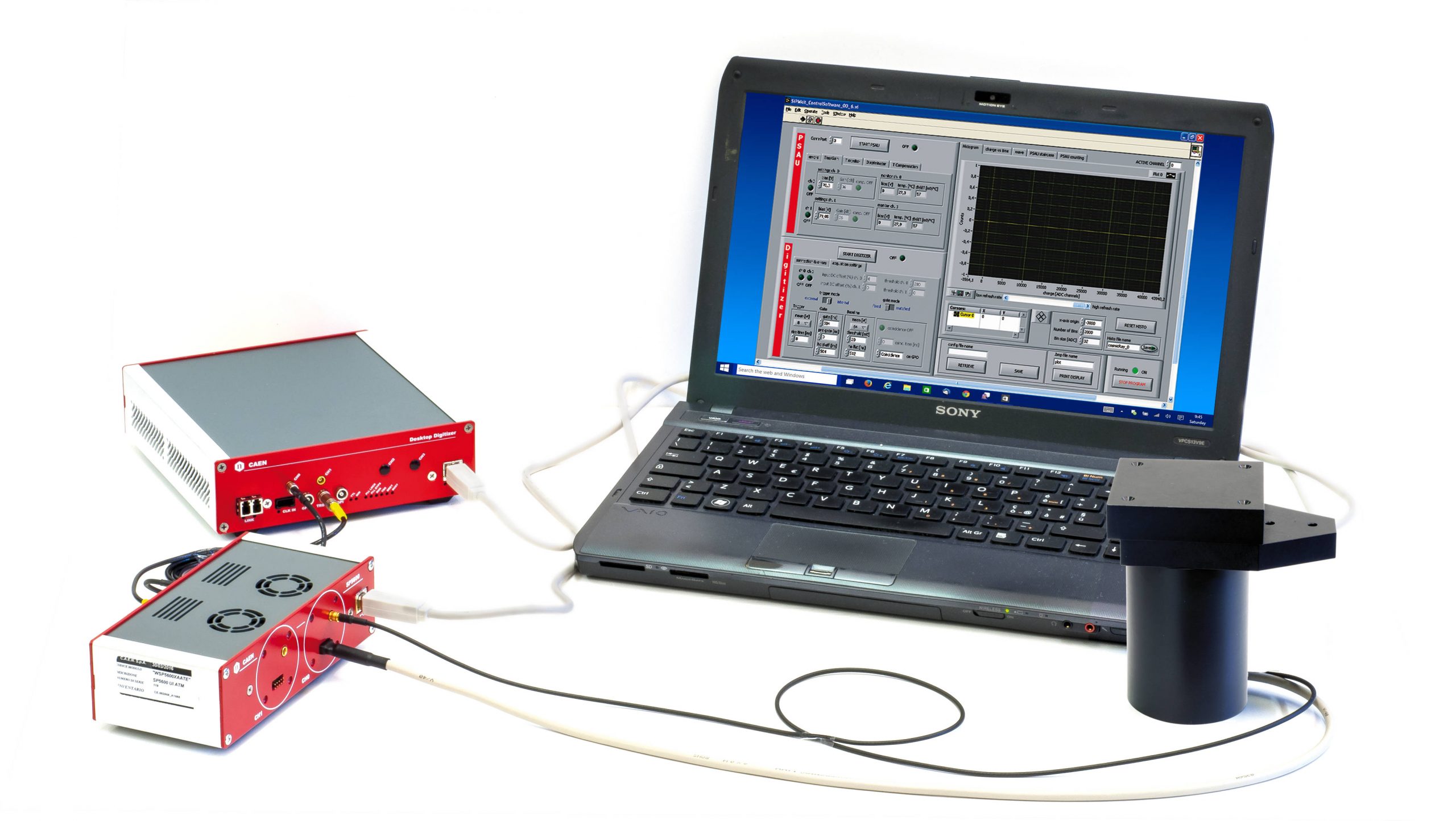| Difficult | Execution Time | Data Analysis | Radioactive Sources |
|---|---|---|---|
| No | Yes |
Hardware setup
This experiment guide is referred to the SP5600D educational kit.
Equipment: SP5600D – Educational Beta Kit
| Model | SP5600 | DT5720A | SP5608 | Additional Tool |
|---|---|---|---|---|
| Description | Power Supply and Amplification Unit | Desktop Digitizer 250 MS/s | Scintillating tile | Beta Radioactive source |
Purpose of the experiment
This experiment investigates the impact of a reflective coating on the light collection efficiency in a plastic scintillating tile.
Fundamentals
Scintillating materials are commonly used in high energy physics and medical applications because of their capability to convert high energy radiation into optical photons and they are usually coupled with a photosensor. Scintillator has a key tole in the detection chains and it is often mandatory to extract and detect the generated scintillation light as efficiently as possible. The amount of light generated during the scintillation process is, in standard configurations, only a small percentage of this light reaches the photodetector. Extracting as much light as possible from the crystal becomes this crucial, given that both energy and time resolution depend strongly on the amount of detected light. Indeed, extracting more light enables a more accurate estimation of the energy absorption in the scintillator itself, and, moreover, if not covered by any material, the scintillator can let light escape through its lateral surfaces, thus losing a significant number of optical photons.

Experimental setup block diagram
Carrying out the experiment
Connect the power and the MCX cables of the SP5608 tile to one channel of the SP5600. Connect the two channel outputs to DT5720A: the analog output to channel 0 and the digital output to “trigger IN“ of the digitizer. Use the default software values or optimize the parameters to evaluate the contribution not coming from the beta source and choose the discrimination threshold in mV. After that, switch off the power supply, open the SP5608 top and place the beta source on the scintillating tile. Close the support top, switch ON the power supply and acquire the beta spectrum. Repeat the spectrum acquisition after having uniformly covered the scintillator with the Teflon tape leaving only a window open for the optical coupling with the SiPM.
Results
The presence of a white coating allows the user to observe the improvement of the light collection via the acquisition of 90Sr spectrum.

90Sr spectrum acquired just by using optical grease as coupling between scintillator and SiPM.

90Sr spectrum acquired by using Teflon coating and Optical interface sheet between scintillator and SiPM.


